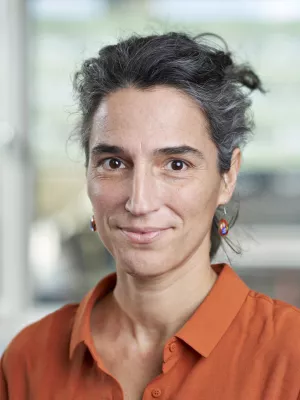
Ester Barinaga
Professor

Greening monies: Remaking money for a sustainable future
Author
Summary, in English
A variety of complementary monies are being implemented as socio-technical instruments to move individuals into action and ignite ecological collaboration. Their starting point is the recognition that we have never been modern; that human society and nature, the economy and the environment, have never been separate spheres. Modernism may have conceptualised them as distinct fields, organising the sciences in separate faculties, experts in independent groups, policy resolutions in distinct agencies. Yet, what the climate predicament tells us with apocalyptic strength is that nature and society go hand in hand, that the natural environment is indistinguishable enmeshed in the economic and political fabric of communities, and that we therefore need to heed nature in the way we organise our societies. Attending such insight, some monetary entrepreneurs attempt to embed nature into socio-economic practice by articulating the environment into the very rules making and governing money.
The presentation will look into three complementary monies designed to infrastructure a healthier relationship between Nature and Society. Each of them is designed and governed to deal with their own specific environmental predicament – that is, the monetary configurations have been made greener. Conversely, each of them induces individuals and communities to care for their natural environment – in other words, these are monetary assemblages that nudge individual agency and collective action towards green behaviour. Hence the double meaning intended in the presentation’s title: Money has been made green; it, in turn, greens the behaviour of its users.
In each of the three complementary monies studied investigated – Turuta, Vilawatt, and Plastic Bank –, we will be able to recognise a money that is both constituted by, and constituting of, an economy committed to the stewardship of nature. Each following its own organising principle – the commons, local state, and the market –, the three monetary assemblages transform actions of care for nature into monetary tokens, and then organise the larger infrastructure so that those tokens can be transferred across persons and exchanged for goods and services. The designs of their monetary architectures line-up actors, ideas, interests, and materials so as to make a difference on the individual motive of action – from pure gain to care for nature – and thus on the capacity to organise collectively towards respecting and caring for Nature. The difference between the principles organizing these monies does however differently shape their strategy, and capacity, to mobilize for global transformation.
The presentation will look into three complementary monies designed to infrastructure a healthier relationship between Nature and Society. Each of them is designed and governed to deal with their own specific environmental predicament – that is, the monetary configurations have been made greener. Conversely, each of them induces individuals and communities to care for their natural environment – in other words, these are monetary assemblages that nudge individual agency and collective action towards green behaviour. Hence the double meaning intended in the presentation’s title: Money has been made green; it, in turn, greens the behaviour of its users.
In each of the three complementary monies studied investigated – Turuta, Vilawatt, and Plastic Bank –, we will be able to recognise a money that is both constituted by, and constituting of, an economy committed to the stewardship of nature. Each following its own organising principle – the commons, local state, and the market –, the three monetary assemblages transform actions of care for nature into monetary tokens, and then organise the larger infrastructure so that those tokens can be transferred across persons and exchanged for goods and services. The designs of their monetary architectures line-up actors, ideas, interests, and materials so as to make a difference on the individual motive of action – from pure gain to care for nature – and thus on the capacity to organise collectively towards respecting and caring for Nature. The difference between the principles organizing these monies does however differently shape their strategy, and capacity, to mobilize for global transformation.
Department/s
- Department of Business Administration
Publishing year
2023-06-16
Language
English
Document type
Conference paper
Topic
- Business Administration
Keywords
- money
- markets
- democracy
- alternative currencies
Conference name
Money as a Democratic Medium 2.0.
Conference date
2023-06-15 - 2023-06-17
Conference place
Hamburg, Germany
Status
Unpublished
Project
- Special-purpose money: Complementary digital currencies and the sustainable development goals